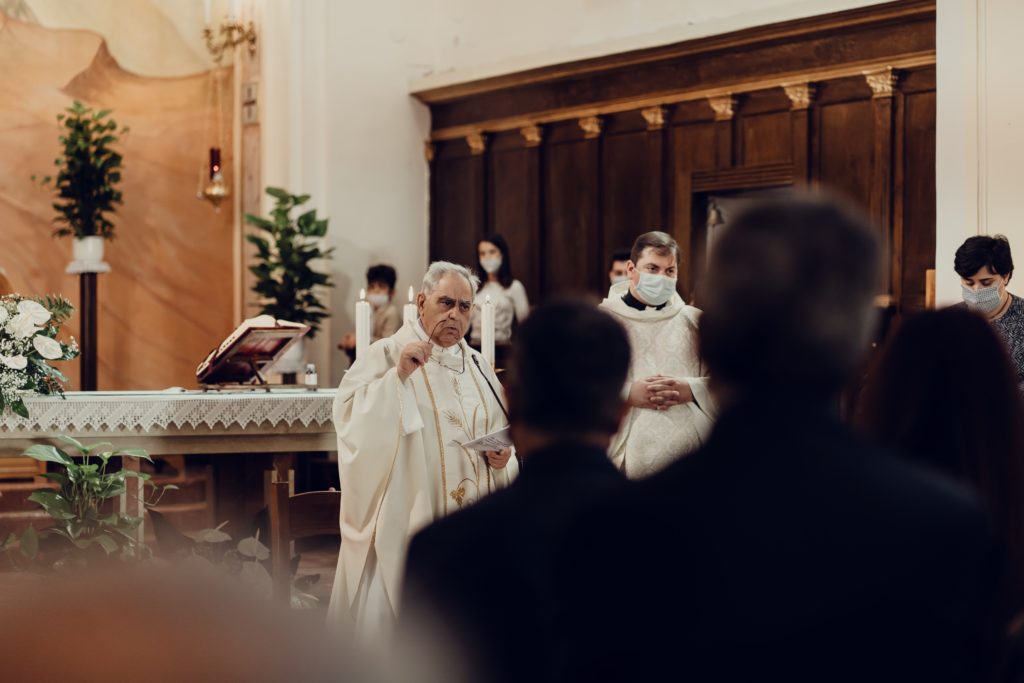Sermon-Writer’s Block, Artificial Intelligence, and Women’s Ordination (A Satire)
[This post was co-written by Matthew Casey-Pariseault and Bernadette Raspante. Incidentally, no artificial intelligence technology was used in the creation of this post.]
Father Tavárez sits staring into the bluish glow of his Macbook Pro. It is half-past midnight and the fact that it is now technically Sunday, April 30 adds to the pressure building up around his temples and beginning to stretch across his forehead. Now, seventeen years removed from his own ordination, the priest shortage has finally hit home. There was not a single novitiate in the diocese preparing for the following year of study for the priesthood.

It isn’t that he’d not put thought into his sermon, to be delivered at the 9 and 11 o’clock masses tomorrow, well today…technically. He simply had not been able to find the words for an inspiring message to the congregation. This was to be a day for Catholics all over the world to pray for “the master of the harvest to send out laborers” (Mt 9:38). A few months earlier, the parishioners had learned the extent of the priest shortage in the diocese and anxiety and fear had crept into the congregation. Whispered comments after mass turned to concerned emails and long conversations. While Father Tavárez did his best to dodge these conversations, the parishioners’ suggested solutions to the problem became more extreme. Maybe they could become a missionary church, or the diocese could consider ordaining widowers. What about allowing married men to study for ordination? But one of these ideas troubled him most: the ordination of women.
Scrambling to refocus his attention, he resolves not to address these wild suggestions in his Vocations Day homily. Tradition, scripture, and prayer would need to be enough. The clock on the top right corner of the screen now reads 1:03 am. “How dreadfully time tramples on the human will,” he thinks to himself. It was as if he could physically feel the limits to which the priestly vocation had pressed his intellectual capacity to. Any work of the mind can do it. Burn out, brain fog, call it what you will. Teachers, writers, marketing agents, politicians, labor leaders suffer this same fate from time to time. At some unexpected moment, they find themselves staring at a blank page in fear. Father Tavárez’s mind started to wander.
His rigorous training for this priestly vocation in the Catholic Church had begun in high school, over two decades earlier. His teachers, many of them Dominican friars, instilled in him a great love of prayer and monasticism.The all-boys school prided itself in producing seminarians from nearly every graduating class. There was something so simple about the fact that each student could perhaps be called to the priesthood, and could respond to that call. What on earth had caused such drastic changes since those uncomplicated days?
Now the clock reads 4:30 am. Father Tavárez rubs his eyes, knowing this sermon will not be his best work. He opens another tab. The empty chat box of the AI generator blinks at him for a few minutes before he types in the prompt: “Write a homily for Vocations Sunday.” He can tell immediately that the response is beautifully written. But just four sentences in, and there is a problem. “Our prayers are needed as we encourage all men and women to discern priestly ordination.” He tries another prompt “write a homily for true priestly vocations.” Then, “write a homily for vocations in the image of Christ” But he keeps receiving responses calling for priestly vocations for all.
Nearing his wit’s end, Father Tavárez types one final prompt: “Write a CATHOLIC homily for Vocations Sunday.” The capital letters, he hopes, will express how seriously he needs this last-minute plan to work. He hurriedly scans the AI output. This time he sees no red flags, no direct references to an inclusive priesthood. With just enough time to shower and brew a cup of coffee before Mass, he prints the sermon.
There he stands. At the pulpit before the bright-eyed 9am Mass congregants, Father Tavárez reads the sermon on what feels like autopilot. So exhausted from his struggles the night before, he doesn’t even hear the final call of his own voice finishing the Vocations Day sermon. “All of the baptized can answer a call to priesthood.” He doesn’t hear himself speak these words, but everyone present that morning certainly does. With a little help from artificial intelligence, the congregation’s yearning for their parish priest to support the call for a renewed and inclusive priesthood was fulfilled.

4 Responses
Thanks for injecting a little humor into this very serious issue. Most of your readers, like me, have heard lots about AI lately and have no idea quite how it works, so this was interesting on that score too. But why were both of the co-authors not given equal recognition on the author line of this piece, in a space that is all about equality? Is there a technical problem, perhaps blog “software” playing hard-ball, and only allowing one author the space?
I liked this unique approach and that you (both the male AND the female) wrote it so well, it engaged our thoughts and made us chuckle. The “intelligence” that produced those last lines were endearingly human, far from “artificial” in any sense. Now will someone wake that priest – and his kind everywhere – up!
I wonder if the Vatican used AI to write the documents against the ordination of women.
Loved this